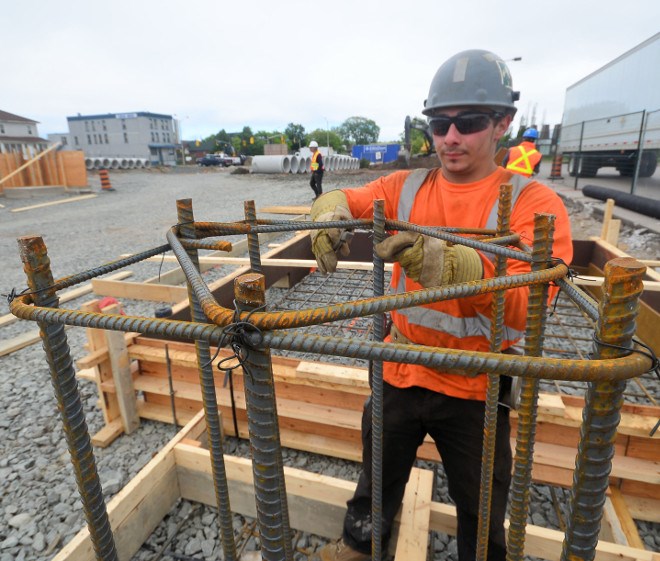A new report released by the Canadian Chamber of Commerce said much work needs to be done to move traffic in major cities, expand broadband networks, improve trade corridors to the U.S., lay down new pipelines, and unlock the North’s potential.
The report’s name – ‘Stuck in Traffic for 10,000 Years: Canadian Problems that Infrastructure Investment Can Solve’ – comes from the estimated amount of the time commuters in big cities spend stuck in traffic every year because of road congestion.
The report has corporate sponsors including Telus, Rogers, Ontario Power Generation, Suncor, and various B.C. port authorities and container shippers.
The chamber said the lack of proper infrastructure is wasting Canadians’ time and leading to lost business opportunities.
The report identifies seven infrastructure challenges that government must target to keep Canada moving and competitive.
- Traffic congestion in major cities
- Facilitating trade along the Asia-Pacific Gateway and corridor
- Improving digital access and infrastructure
- Maximizing potential in Canada’s North
- Enhancing the Ontario-Quebec trade corridor
- Getting Canadian oil and gas to markets
- Green electrification and transmission
For Canada’s Far North, the Canadian chamber is pushing for Ottawa to spend more than the $2 billion over 11 years already committed for rural and Northern infrastructure as part of the fed’s larger $180-billion infrastructure plan.
The chamber said federal spending should targeted on Northern projects that produce “the greatest economic and social impacts across the entire region,” rather than funding “one-off” individual projects.
The chamber adds Canada Infrastructure Bank should have a specific focus on facilitating public-private investment in strategic infrastructure to unlock the North’s potential.
In a release, the Sault Ste. Marie Chamber said the report mirrors their earlier call for Queen’s Park to commit funding to developing and expanding broadband internet access in rural and remote areas.
Creating a robust digital infrastructure is essential for rural and Northern communities, said Sault Ste. Marie Chamber CEO Rory Ring in a statement.
“It is a key factor in closing the geographic divide that separates Northern communities from major Canadian and international centres and allows businesses to access markets that they previously could not and to compete globally.”
With more than 70 per cent of Canada’s manufacturing revenue emanating from Ontario and Quebec, the report identifies deficiencies in highway capacity in both provinces.
The chamber expects major highway networks on the Ontario-Quebec trade corridor to be operating at excess capacity within 15 years if investments are not made to accommodate the needs of shippers and customers.
The Sault chamber said it’s long been promoting the community as a point of access to the Northern U.S. through its road, rail, and marine connections.
Sault chamber president Paul Johnson said the infrastructure challenges identified in the report are relatable to the Sault.
As part of its ongoing advocacy, the chamber said it will keep promoting investment in “economic enabling infrastructure” like the Port of Algoma, rail expansion and the development in the Ring of Fire.




